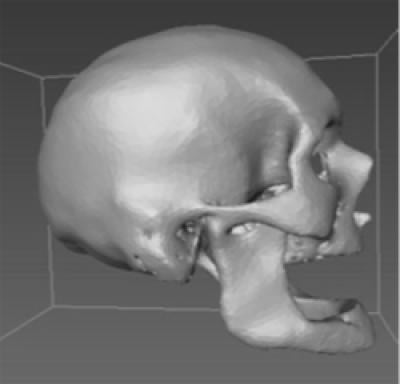January 20, 2014 — A North Carolina State University study found data from
CT scans can be incorporated into a growing forensic database to help determine the ancestry and gender of unidentified remains. Craniofacial surgeons may also find clinical applications.
"As forensic anthropologists, we can map specific coordinates on a skull and use software that we developed—called 3D-ID—to compare those three-dimensional coordinates with a database of biological characteristics," said Dr. Ann Ross, a professor of anthropology at NC State and senior author of a paper describing the work. "That comparison can tell us the ancestry and sex of unidentified remains using only the skull, which is particularly valuable when dealing with incomplete skeletal remains."
The 3D-ID database’s size is hindered by limited access to contemporary skulls with clearly recorded demographic histories.
To develop a more robust database, Ross and her team launched a study to test using CT scans to obtain skull coordinate data from living people.
The University of Pennsylvania Museum's Morton Collection provided the NC State researchers with CT scans of 48 skulls. Researchers mapped the coordinates of the actual skulls manually using a
digitizer, or electronic stylus. Then they compared the data from the CT scans with that of the manual mapping.
The researchers found eight bilateral coordinates on the skull—those found on either side of the head—were consistent for both the CT scans and manual mapping, allowing a significant expansion of the database.
“These bilateral coordinates give important clues to ancestry because they include cheekbones and other facial characteristics," Ross said.
However, the five midline coordinates the researchers tested showed inconsistencies between the CT scans and manual mapping. Midline coordinates are those found along the center of the skull, such as the bridge of the nose. The team is continuing research to analyze and correct the inconsistencies.
The research may also help craniofacial surgeons in reconstructive surgery.


